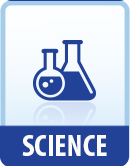|
This section contains 736 words (approx. 3 pages at 300 words per page) |

|
Overview
1,3-butadiene (one-three-byoo-tah-DYE-een) is a colorless gas with a mild, slightly sweet odor. It occurs naturally in petroleum, from which it is extracted at refineries. The compound was first discovered in petroleum in 1886 by the English chemist Henry E. Armstrong (1848–1937) and his colleague A. K. Miller (no dates available). This discovery apparently had no practical application until 1910 when the Russian chemist Sergei Lebedev (1874–1934) developed a method for polymerizing butadiene to make a rubber-like substance. Even then, Lebedev's invention, called polybutadiene, was primarily a laboratory curiosity. There was relatively little demand for rubber products that could not be met by the vast supplies of natural rubber from Southeast Asia.
Key Facts
Other Names:
Biethylene; bivinyl; divinyl; erythrene; vinylethylene
Formula:
CH2=CHCH=CH2
Elements:
Carbon, hydrogen
Compound Type:
Alkene (unsaturated hydrocarbon)
State:
Gas
Molecular Weight:
54.09 g/mol
Melting Point:
−108.91°C (−164.04°F)
Boiling Point:
−4.41°C (−24.1°F)
Solubility:
Insoluble in water; soluble...
|
This section contains 736 words (approx. 3 pages at 300 words per page) |

|


